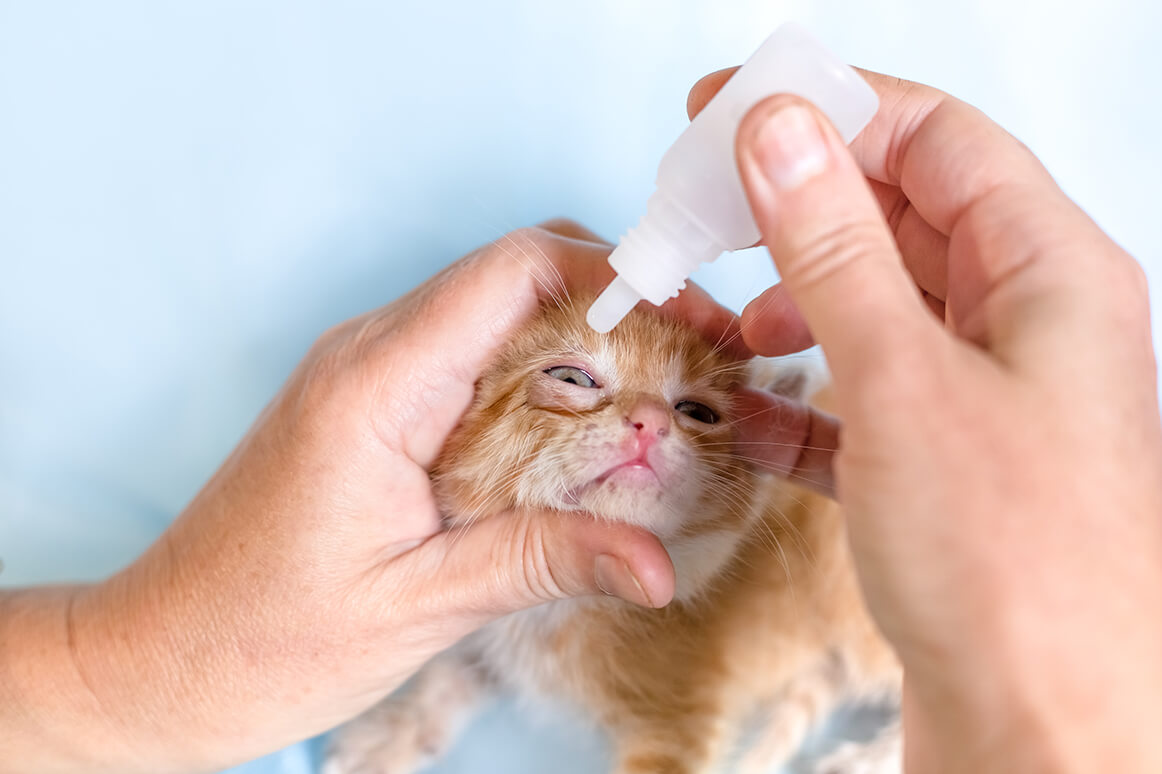
- by Dr.Thilo Senst
Feline Cataracts: Symptoms, Causes, and Management
- by Dr.Thilo Senst
Cats are mysterious creatures, known for their agility, grace, and the ability to stare directly into your soul. But what happens when those piercing eyes start looking more like frosted windows? Cat eye cataracts might be to blame.
Understanding cat eye cataracts is essential for ensuring your feline friend continues their reign as the household ruler without bumping into every piece of furniture. Let’s dive in with a mix of humour, science, and practical tips that will leave you and your cat seeing things clearly.
Cataracts are the eye’s way of saying, “I need a little maintenance.” They occur when the lens becomes cloudy, disrupting vision. While it’s more common in dogs, cats are not entirely off the hook.
Think of a cataract as a tiny frosted glass window in the middle of a perfectly good lens. Your cat can see, but it’s like trying to watch TV through cling film—frustrating at best.
You know the feeling: you step out of the house, and your glasses fog up instantly. That’s what life feels like for a cat with cataracts.
Spotting cataracts early can make a significant difference in management. Here are the signs:
Cataracts often come with age. Just like humans, cats might need a bit more TLC as they grow older.
Did you know cats can develop diabetes too? High blood sugar levels can lead to cataracts.
Some breeds, like Persians and Himalayans, are more prone to cataracts. They’re the aristocracy of the cat world, and their health quirks match their poshness.
A catfight gone wrong or an untreated infection can lead to cataracts.
A lack of essential nutrients can contribute to eye health issues. Cats need a balanced diet to maintain their laser-sharp vision.
While cataracts can’t always be reversed, proper management ensures your cat maintains a good quality of life.
Early detection is key. Regular eye exams can spot cataracts before they become a significant issue.
In some cases, anti-inflammatory drops or other medications can slow cataract progression.
For severe cases, cataract surgery is an option. Yes, your cat can have eye surgery—it’s not just for humans anymore!
If your cat’s vision is impaired, keep furniture in the same place and use nightlights to help them navigate.
You’re not just their human; you’re also their guide, architect, and emotional support human.
Q: Can cataracts in cats be cured?
A: While surgery can remove cataracts, not all cats are suitable candidates. Management is often the best approach.
Q: Are cataracts painful for cats?
A: Cataracts themselves aren’t painful, but underlying conditions, like inflammation, can cause discomfort.
Q: How much does cataract surgery for cats cost in the UK?
A: The cost ranges from £2,000 to £4,000, depending on the clinic and the severity of the condition.
Cataracts might sound daunting, but with early detection and proper care, your cat can continue to enjoy a fulfilling, frolic-filled life. Whether it’s managing their diet or scheduling regular vet visits, your proactive approach makes all the difference.
![]()
Enter your details & download our comprehensive 50+ page printable Dr. Senst Pet Care Planner completley FREE! - keep track of all your pet’s needs, from medical history and training to vet visits, grooming, diet, and more!










Share:
Choosing the Right Dog Bed: Comfort and Support for Your Pet
The Role of Diet in Maintaining Cat Gut Health